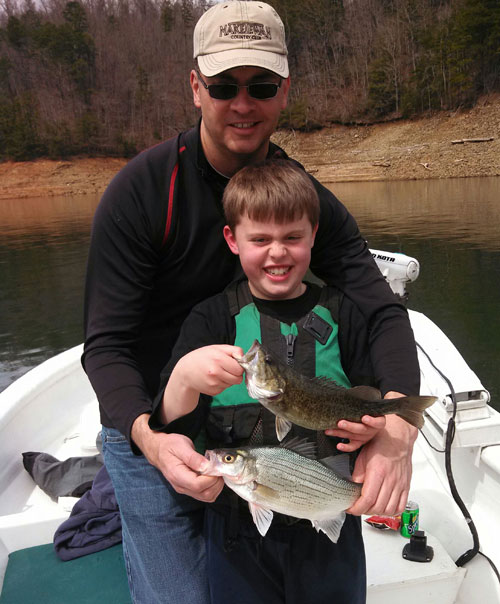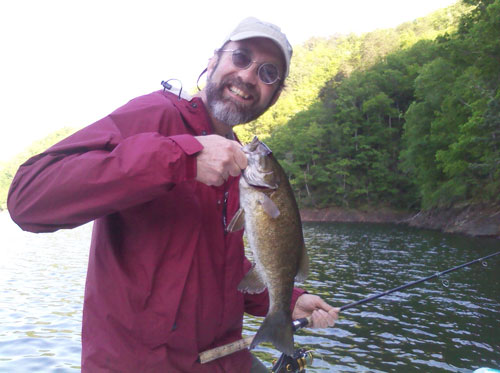There is something about spring fishing on Fontana that almost everyone enjoys. In fact, there are lots of things folks enjoy about it. Let’s start with the weather. Except for some nice days mixed in, you will almost always need to come prepared for cold, wind and wet, or maybe frozen wet, through January and February. Once spring arrives, you can at least leave a few clothes behind. Our fish are in a great mood in the spring and so, they respond to the dinner bell with a vengeance, needing to continue eating while finding that “special one” to propagate with, in order to continue the species. When actually in the act, they may have clouded views about chow, but any time, outside of “the moment,” they are generally hungry. This urge to find members of the opposite sex often moves them to the shallower haunts and banks, making them much easier to locate and reach with our baits. No more trolling 100+ feet looking for the scattered pods of fish, any likely looking bank or point or flat can hold great numbers looking for mates.


Personally, there is one thing I try to avoid, and that is catching what walleye we have left, when they are really in spawn mode up in the rivers. I feel like they need the space and opportunity to be left alone so we can enjoy them for years to come. After they spawn, they stay shallow for several weeks until it gets to be summertime and they return to their suspended time. During this interim, they are fairly easily targeted maybe a mile, to a couple of miles, back from the river mouths. They, again, will hit the abovementioned baits and night crawlers fished on jig heads. You will pick up a little of everything with crawlers including some really nice channel cats. So enjoy the nicer weather, take off a few clothes, get out your larger tacklebag, buy more rods, and enjoy one of the greatest gifts God has given this area.
Later, Capt. James
